Eco Drama returned to Saint Vincent’s Primary this year to deliver another Out to Play project. In 2015 Eco Drama began the Out to Play journey working with St Vincent’s and 3 other schools across Glasgow during the pilot project, and during September and October of 2019 we were happy to come back to meet new pupils and teachers. St Vincent’s primary was quick to welcome me and I felt part of the team from day one. The pupils and staff fully embraced coming Out to Play and each workshop was met with enthusiasm.
St Vincent’s benefits from a large and varied outdoor space that includes a pitch, climbing frames, trees and a wonderful area affectionately named ‘The Field of Dreams’. Designed by the pupils ‘The Field of Dreams’ has flowers and herbs in planters, a sand pit, a shelter and beautiful willow arches. This space lends itself well to outdoor learning, however my aim was to show how every part of the playground could serve as a source of inspiration. So, in true Eco Drama style we began the residency with a magical map of the playground. It had illustrations of areas such as ‘The Giants Causeway’, ‘The Forgotten Forest’, ‘Fairy Land’ and ‘Thornybank’. The map inspired our adventures each week and we enjoyed travelling imaginatively through the playground to bring it to life.
Classes were encouraged to make their own maps too. They distressed paper by colouring it in or staining it with tea. They then chose an area they knew well such as their playground, local park or garden. Using their wonderful and endless imaginations they created magical, alternative worlds on their maps.
Every workshop followed the Out to Play structure:
Wonder – Excitement – Inspiration – Collaboration – Sharing – Reflection
To introduce wonder and excitement, we started by journeying outside the classroom using the map. We would search for a treasure chest with clues hidden inside. The clue, or lure, plants the seed of curiosity and even the most reluctant participants can’t help but become engaged.
We then gather together for the story that should inspire ideas, imagination and a little whimsy. Inspired by the story we collaborate in small groups or as a whole group to create new stories, scenes and creations. We then share our work and reflect on the themes of the workshop.
I found the younger classes benefited more from being guided as a whole class and then let loose to explore and reflect in their own way. In contrast, the older classes thrived in group work and focusing on creating their own stories and scenes. I also witnessed their ability to work in a team and share their work confidently improve each week. So much so that in the last week of the residency, the older classes of St Vincent’s barely needed any support and quickly created short stories that they performed exceptionally well. The younger classes also became comfortable in expressing themselves in different ways, particularly through role play and sculpting.
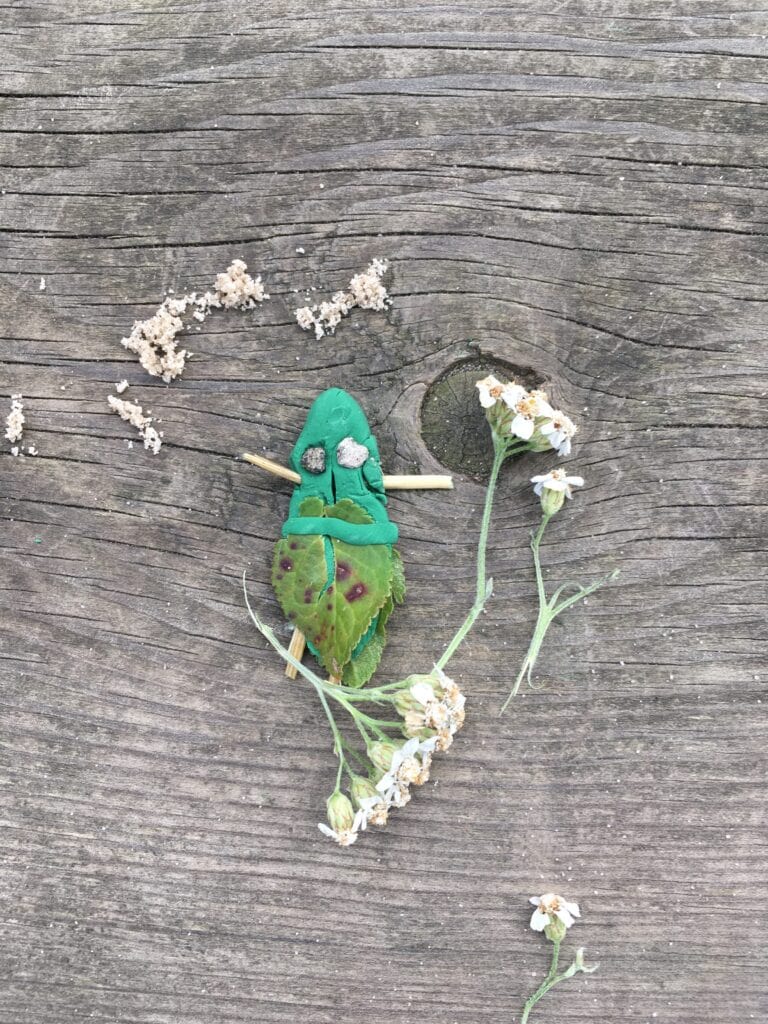
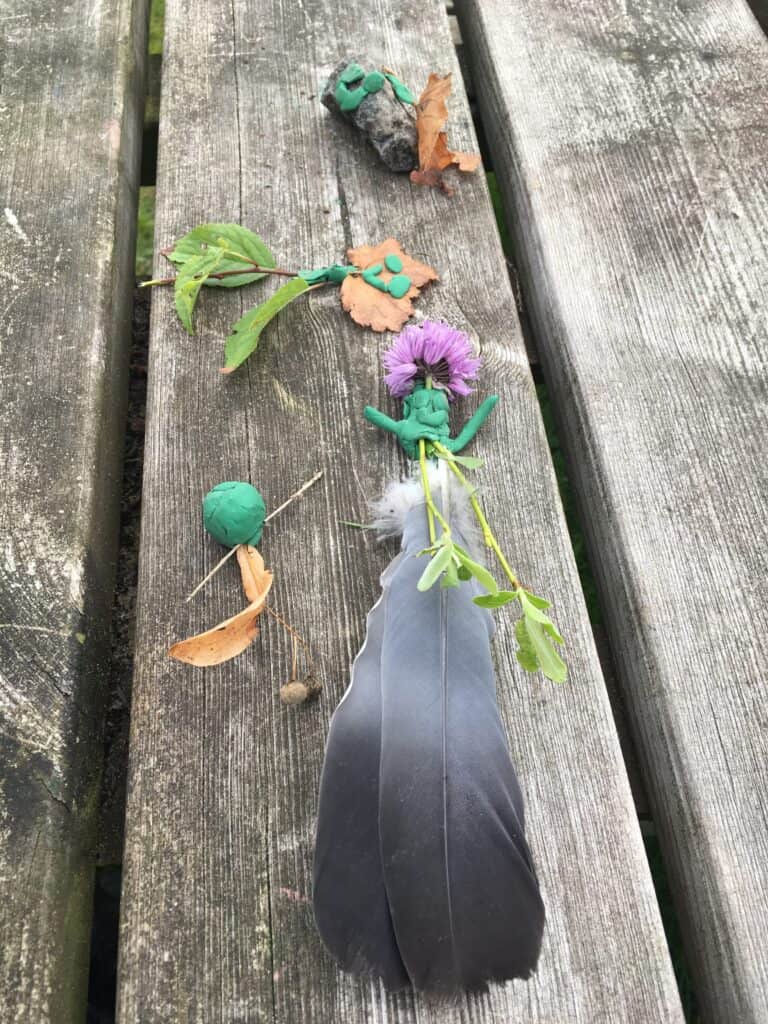
One of my favourite weeks was when we visited ‘The Forgotten Forest’. There is a row of trees in the playground that are so neatly aligned along the back fence that it’s easy to forget these are beautiful trees that grow flowers, berries and seeds and have creatures living in them. During these workshops we took the time to get to know the trees by drawing them, doing tree rubbings and making stories about them. Older classes had a go at a blindfold exercise in which you are led to a tree in the playground. I learned this from fellow Eco Drama Artist Ben Mali, and it’s still one of my favourite activities.
Meet a Tree Activity
You can do this in pairs or in larger groups. Extra people in the group can be safety monitors as you can never have too many. One participant will be blindfolded and the other will choose a tree to lead them to (this can also work with other natural things like herbs or rock formations.) They lead their blindfolded partner to the tree and give them time to feel it. Are there bumps and grooves? Are there branches? How wide is it? Can you fit your arms around it? What does it smell like? Does it have any holes or sap? Once they have gathered all the information they can, using as many senses as possible, they can be led back to the starting spot. You can add in a couple of twists and turns to make it harder. The blindfold can then be removed and now they have to find their tree again.
The classes really enjoyed this exciting exercise and it ensured they were engaged for the next step. Their next task was to reflect in their nature diaries to try and identify the trees. They drew them and annotated their drawings with extra details like ‘when you drop the seeds they spin’, ‘the leaves look like the Canadian flag’ or ‘I saw a bird eating the berries’. Their homework was to find out what type of tree it was and any interesting facts. One was a sycamore tree which was easily identified with its maple like leaves and helicopter seeds. The other tree in the playground was much harder to identify. The school didn’t know and I didn’t know either. I asked friends and family, googled it and looked it up in books. After a lot of research we think it might be and Alder Buckthorn or part of the Hawthorn Family. Both of these have interesting folktales about their healing and protective properties. The pupils are keeping a close eye on the tree over winter to see what happens to the berries and if it flowers in the summer. This exercise made us all much more aware of the nature around us and how important it is to learn about it. Some of the pupils and I set ourselves the challenge to identify as many plants and trees as possible. Next time you see a tree or a plant see if you can remember it’s name. It’s a fun challenge.
One class painted their special trees using pumpkin seeds as the leaves. They signed their work using their nature name that they were given at the start of the workshop.
Nature Name Activity
A Nature Name can support participants to feel more at one with nature. It’s fun to pick them at random as the surprise words may represent a hidden part of each child’s personality. Write down nature words, for example names of trees and animals, on strips of paper. Fold up the paper and put them in a bag or hat so they can be chosen at random. Invite participants to close their eyes and choose two. Whatever they choose is their nature name. They are free to choose what order it goes in or they can choose to keep parts of it and leave out others. For example, if I chose ‘Squirrel’ and ‘Elm Tree’ I could be called ‘Tree Squirrel’. Remember the nature names and ask participant’s to move around embodying the name. Crawling like an animal or floating like a leaf in the wind.
Some example words – Robin, Crow, Wolf, Wood Louse, Buttercup, Mouse, Sycamore, Silver Birch, Blue Bell, Bear, Moon, Leaf, Ivy, Oak, Willow Tree …
St Vincent’s teachers and pupils made this residency very special. I learnt a lot from the welcoming and encouraging staff as well as the energetic and imaginative pupils. They were completely committed to making the most of the project and ran with every theme. They threw themselves into each workshop and enjoyed any extra reflection they could do after it. For example they made amazing ‘Wonder Boxes’ and filled them with creations, poems and notes about going Out to Play.
The teachers went above and beyond during their teacher led weeks. I thoroughly enjoyed participating in their adventures and soaking up their immersive folktales. Through their stories we travelled to medieval Poland, Fairy Land and Tanzania. The teachers did a great job of crossing the boundaries between being a teacher, storyteller, drama facilitator and play partner. All the while engaging pupils and sparking interest and love for the outdoors. It’s certainly not an easy job.
Being a part of the St Vincent’s team for this short time was an extremely enjoyable and rewarding experience. It was wonderful to witness the groups grow in confidence and become comfortable creating and sharing their stories. Thank you very much one and all at St Vincent’s Primary.
Sarah Rankin
Out to Play 2019 at St Vincent’s Primary

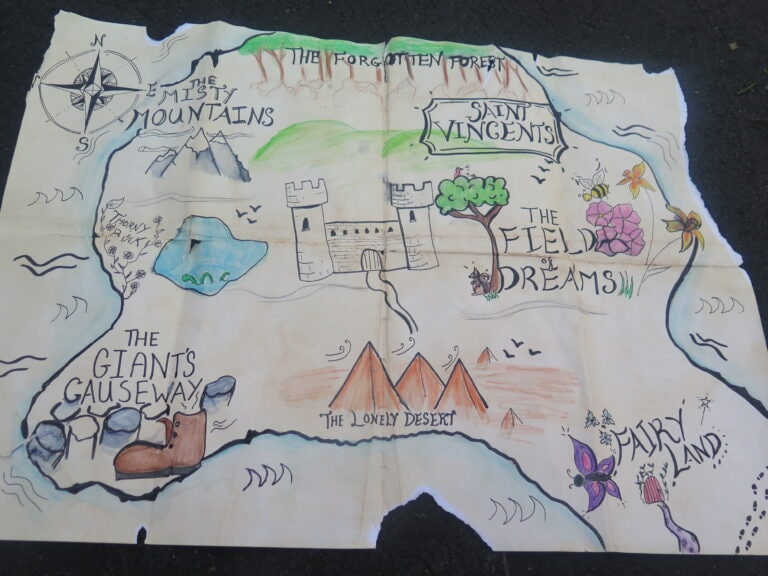


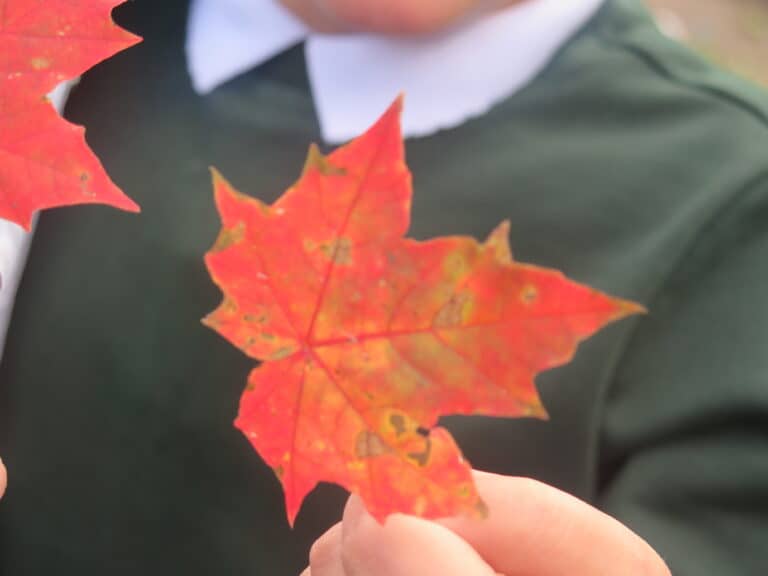
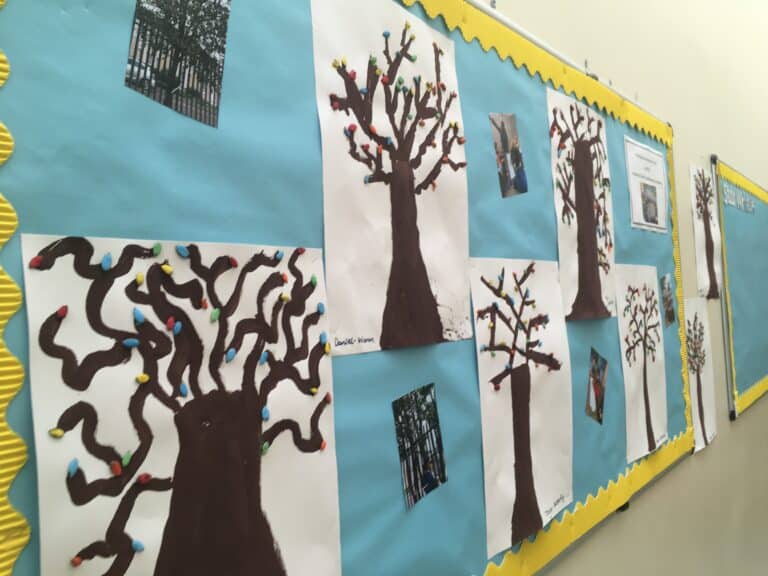

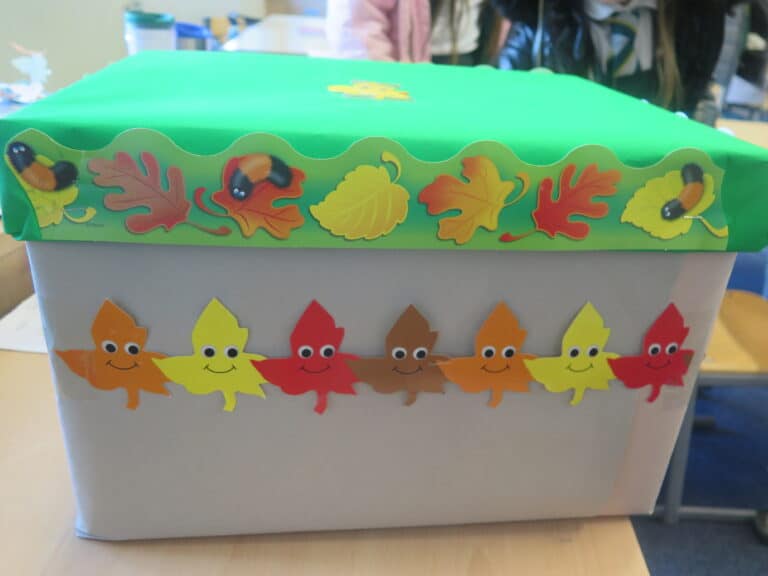


![glasgow city council logo [black] Glasgow City Council logo](https://ecodrama.co.uk/wp-content/uploads/2023/12/glasgow-city-council-logo-black.png)
